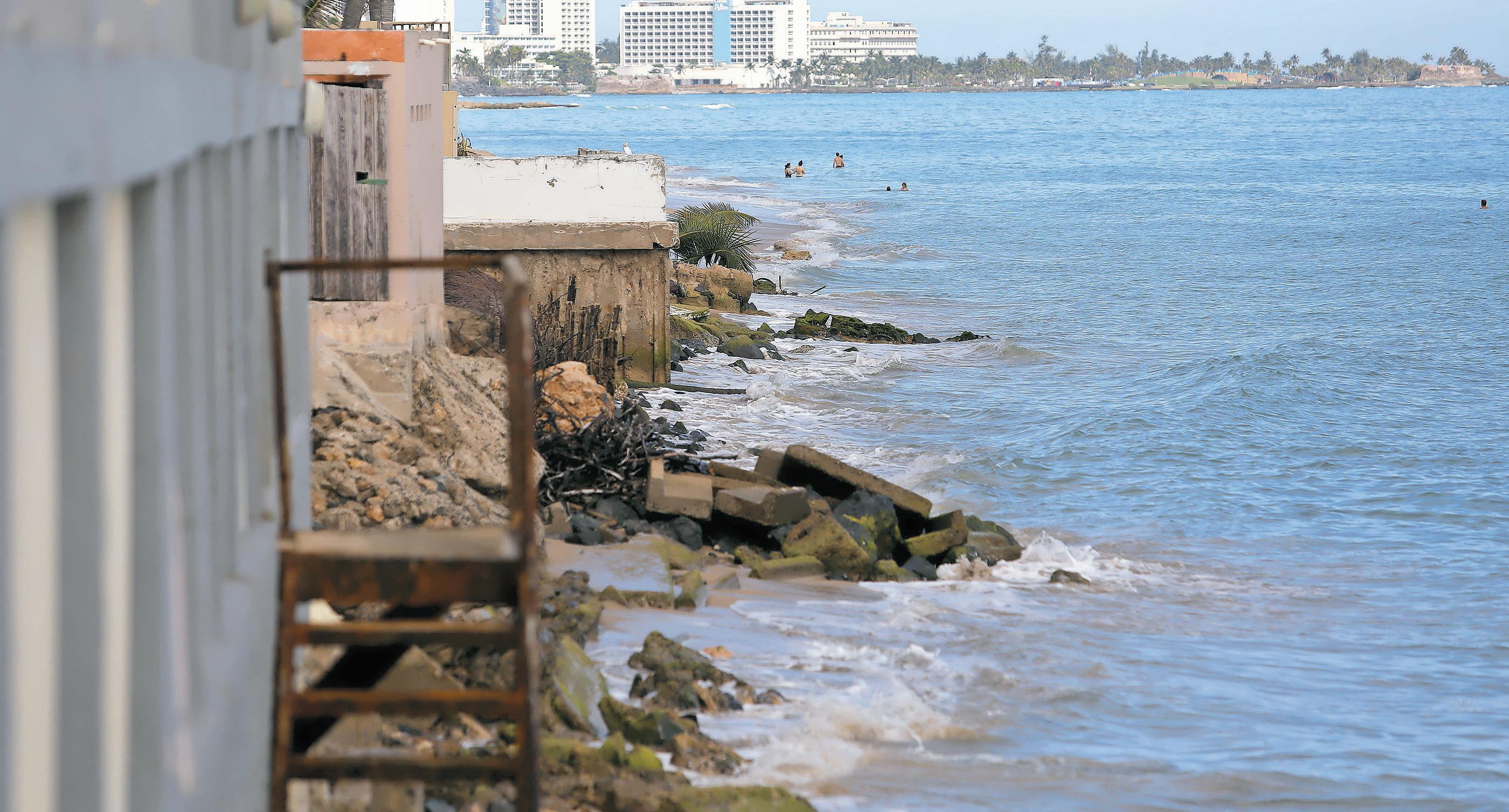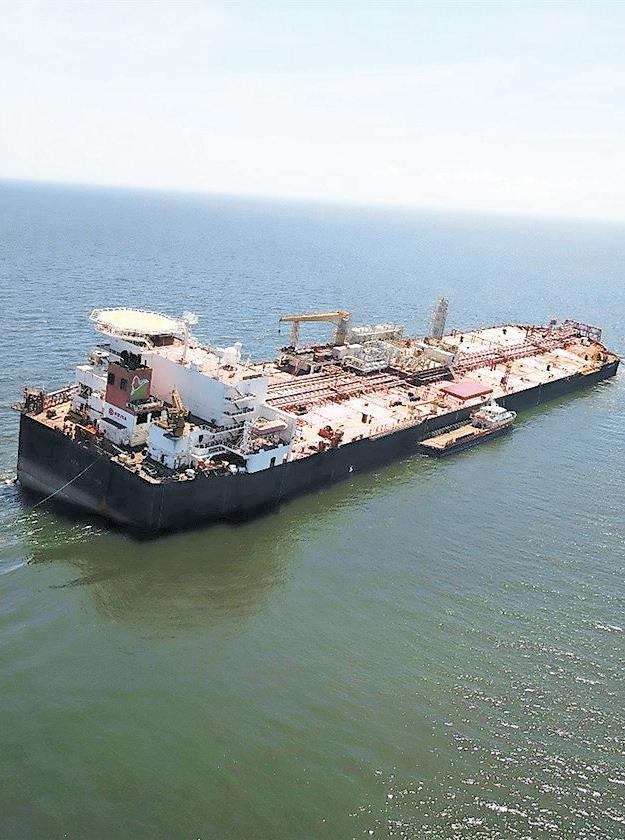
22 minute read
arts
Association, in collaboration with the Art & Culture Committee and the People’s Social Task Force (collectively, the Alliance), presented a report on the state of the island’s cultural sectors amid the COVID-19 pandemic.
The report, responding to October 2020, contains general information on public hearings aimed at addressing the plight of these sectors, as well as insight from professionals in cultural fields, including challenges and proposals.
Advertisement
“The work agenda that we set includes short and long-term goals. Strengthening the cohesion of the cultural ecosystem to overcome its invisibility in the context of the pandemic, conceiving concrete proposals that enhance our integration into the State’s response strategies, and contributing to the social and economic recovery of Puerto Rico are some of them.
“This is essential to overcome the multiple challenges we face, to be effective in promoting, educating, formulating and advocating in the establishment of cultural policies and raising funds that ensure the viability of the cultural ecosystem and a better quality of life for our artists, as a community that has to be recognized as a highly vulnerable,” said Marianne Ramírez Aponte, president of the Museums Association and facilitator for the collaborating entities. Wooden figurines made by Javier Vélez.
Artists have joined voices calling for more funding and tax exemptions to mitigate the financial impact of COVID-19.
Artists Present Proposals to Tackle Pandemic’s Impact
Public efforts result in more funding for the culture and arts industry
Giovanna Garofalo ggarofalo@wjournalpr.com @giopgarofalo
The Puerto Rico Museums
>Carlos Rivera Giusti was made available to individuals and entities in the cultural industry, and other proposals are under evaluation.
In early October, the Economic Development and Commerce Department (DDEC by its Spanish acronym) announced that the Incentive for Creative Industries was allocated an additional $3 million under the Puerto Rico Incentives Code for self-employed professionals in this sector, available at www.RefuerzoEconomico.com.
“Puerto Rico is going through a time of great challenges that affect various economic sectors, including the creative industries, where many entities and employees have not had the opportunity to work for more than six months. It is our duty to offer the aid that is within our reach to provide an economic reinforcement to this sector,” DDEC Secretary Manuel Laboy said.
Meanwhile, the Alliance called to include nonprofit organizations in the Protection Project: Community and Social Impact Organizations, with a report that they presented to Gov. Wanda
Vázquez. Their findings revealed that the economic impact of COVID-19 on the third sector could reach up to $483 million. Including nonprofits in that initiative would reportedly represent more than $300 million that would benefit, among others, nonprofits dedicated to promoting and preserving artists and cultural entities and activities. At the federal level, through the American Alliance of Museums and the office of Resident Commissioner Jenniffer González, the local Alliance has called on the U.S. government to include Puerto Rico’s museum community in any upcoming economic stimulus package and design a specific stimulus for artists and cultural managers. The Alliance also aims to protect local artists’ workshops through a bill under the U.S. Department of Housing, provided that these spaces represent the artists’ housing, art and livelihoods.
Artists Present Proposals
Ramírez Aponte, who also serves as the executive director and curator in chief of the Contemporary Museum of Puerto Rico, called for the creation of a Cultural Task Force to permanently integrate museums in the island’s COVID-19 emergency plan and foster collaboration between these institutions and the government to design projects geared at offering artistic and educational services, as well as art therapy to “promote wellness and social cohesion.” For her part, Raquel Vázquez Varela, executive director of Teatro Público, issued a series of proposals to revitalize the Scenic Arts subsector. Some of these include an exemption of the Sales & Use Tax on ticket sales for performing arts presentations; free access to public spaces for scenic arts presentations until 2021; and a reduced rate for the use of facilities attached to the Institute of Puerto Rican Culture (ICP by its Spanish acronym) until December 2021. Vázquez Varela also advocated for an alliance between the P.R. Department of Education and WIPR (Channel 6) -the island’s public broadcast station- to hire artists to produce educational and cultural programming. Furthermore, she affirmed that Education must hire more art teachers and implement art and theater as required classes in all levels of school education. Visual artist Abdiel Segarra-Ríos observed that local artists who work independently or are new to the scene are at greater risk of unemployment and being removed from their workshops. He also criticized that artists are expected to have an entrepreneurial mindset, but “the professionalization spaces available for recent graduates who want to dedicate themselves to developing their own work are so rare that very few choose to dedicate themselves to it. “If, despite everything, they want to force us to behave as entrepreneurs, we need education curriculums to contemplate it and fair conditions to support us in the process of starting our own businesses. Many of the alternative spaces do not sell a piece until after the first two years of being founded. Legal and financial incentives are urgently needed to stimulate the creation of new patrons, so that giving is not a charitable act, but rather an opportunity to make a country,” SegarraRíos added.
Marianne Ramírez Aponte, president of the Puerto Rico Museums Association, called for the creation of a Cultural Task Force to communicate the needs of this industry in the local government. >Archive
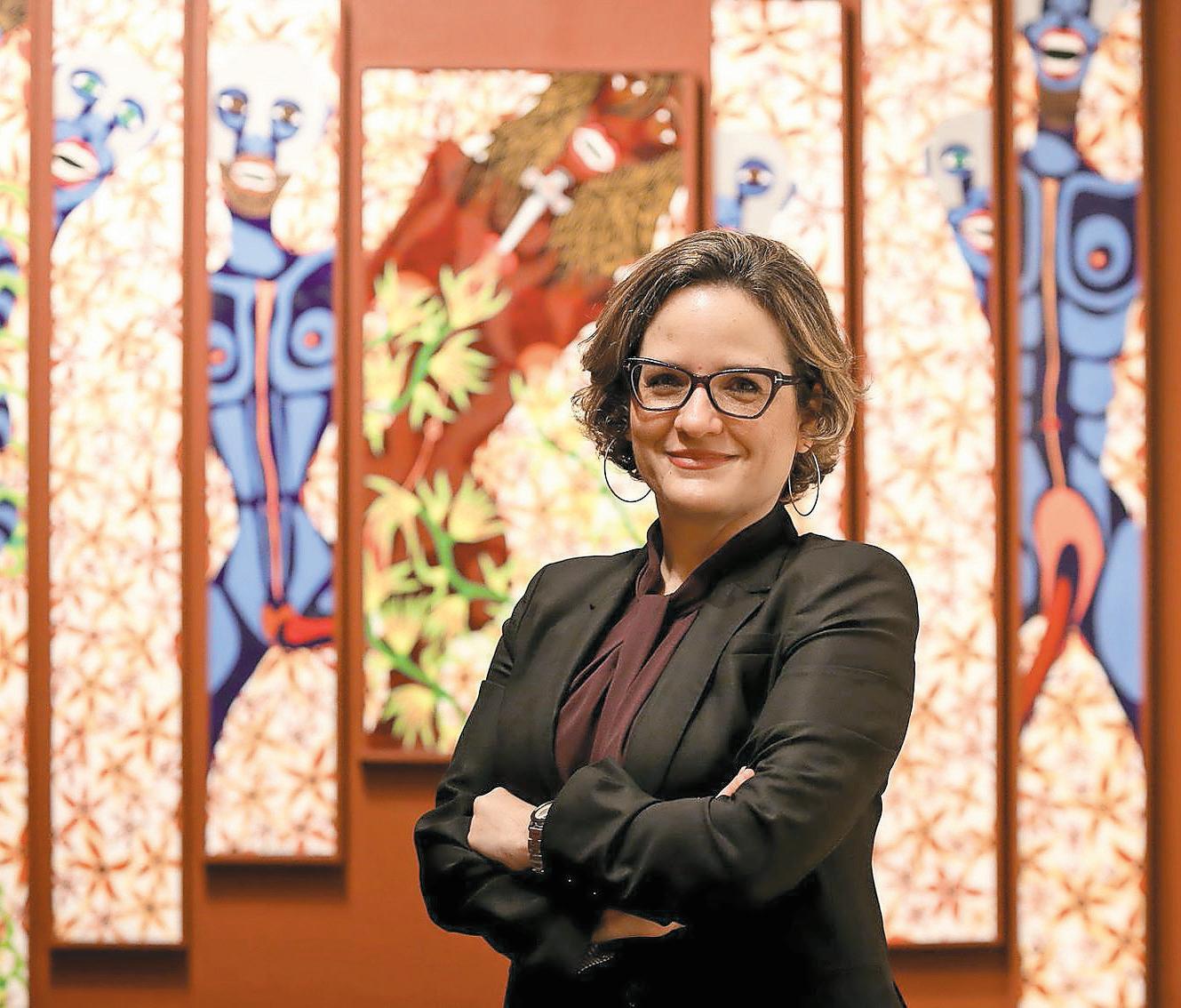
We need agency models and development conditions that adjust to the needs of our sector. Abdiel Segarra-Ríos, visual artist
Other artists from a variety of backgrounds -including dance, print and conservation- agreed that the government must propitiate cultural appreciation and artistic development in the public school system, both to champion future artists and create job opportunities in teaching.
Call for Greater Funding
The government’s budget for Fiscal Year 20202021, approved by the Financial Oversight and Management Board, designates $33.16 million for the Institute of Puerto Rican Culture, the Musical Arts Corp. and the Puerto Rico Fine Arts Center Corp. Artists, however, asserted that the cultural industry needs more allocations paired with tax initiatives. “We need agency models and development conditions that adjust to the needs of our sector. A vision that includes ways to pay taxes that are reinvested in the sector, financial tools that allow buying spaces and building autonomy,” SegarraRíos opined. The full snapshot of the present state of the cultural industry and its monetary needs is generally inaccessible. Lab Cultural, an online platform, gathers data from various sources to generate reports. Its most recent report, with information from 2017, revealed that back then, there were 1,590 establishments related to the industry, generating 16,513 jobs. The subsectors of manufacturing (print, architectonic carpentry and jewelry), retail, film and fine arts education generate annual average salaries lower than $30,000, with the latter offering the lowest average salary at $12,134. These are reportedly exacerbated by the current pandemic due to business closures and lockdowns, among other virus-related measures. As such, the report urges more government funding and measures to impact artists and entities that seek to promote and preserve Puerto Rican culture. “We invite the government, foundations, private companies and civil society to make a long-term commitment to culture. If anything has given him glory, hope, imagination and pride, it has been artists and their ecosystem. The time has come for strong and continuous support,” added Javier Hernández Acosta, director of Business Administration at Sacred Heart University.
Bayer Leads Campaign to Optimize Water Resources
Raises awareness of existing technology, automated systems and controlled spaces
Giovanna Garofalo ggarofalo@wjournalpr.com @giopgarofalo
Bayer Crop Science Puerto Rico, a subdivision of the German multinational pharmaceutical Bayer Corp., is raising awareness through social media about the benefits of automatic drip irrigation systems in agriculture.
Through the “Gota a Gota” campaign, Bayer Crop Science is educating farmers and local communities about efficient uses of water in agriculture, particularly through automated mechanisms. According to the U.S. Geological Survey (USGS), about 71 percent of Earth’s surface is covered by water, of which roughly 96.5 percent are oceans. That is, less than 4 percent is composed freshwater, apt for human consumption, and according to the team at Bayer, about 70 percent of that supply is used to support agricultural sectors.
Given that water is a limited resource and understanding the need to preserve ecological spaces amid the threat of climate change, the Puerto Rican agriculture and agricultural biotechnology industries have implemented a series of practices and technologies to use water with an efficiency rate of up to 99 percent.
Juan Valle, Agronomy manager of Field Projects at Bayer Crop Science, told THE WEEKLY JOURNAL that the company’s focus is automatic irrigation systems, drip irrigation systems and variable frequency drives (VFDs). “Our focus is directed towards that area: automation, use of humidity sensors and VFDs, which are the pressure regulators in the pumps,” he said.
VFDs allow farmers and agricultural workers to use only the amount of water they need. Thus, Valle explained that while drip irrigation allows for water use with 90 percent efficiency, automatic drip irrigation and VFDs would allow up to 99 percent efficient water use in agricultural sectors.
This system was implemented in Bayer’s farms in 2019. Currently, nearly 40 percent of the company’s farms actually have automatic drip irrigation and VFDs, and they expect that number to increase to 65 percent or even 70 percent by the end of 2020. For these means, Valle revealed that
Bayer Crop Science Puerto Rico has been operating in the municipality of Juana Díaz for over 20 years. >Courtesy
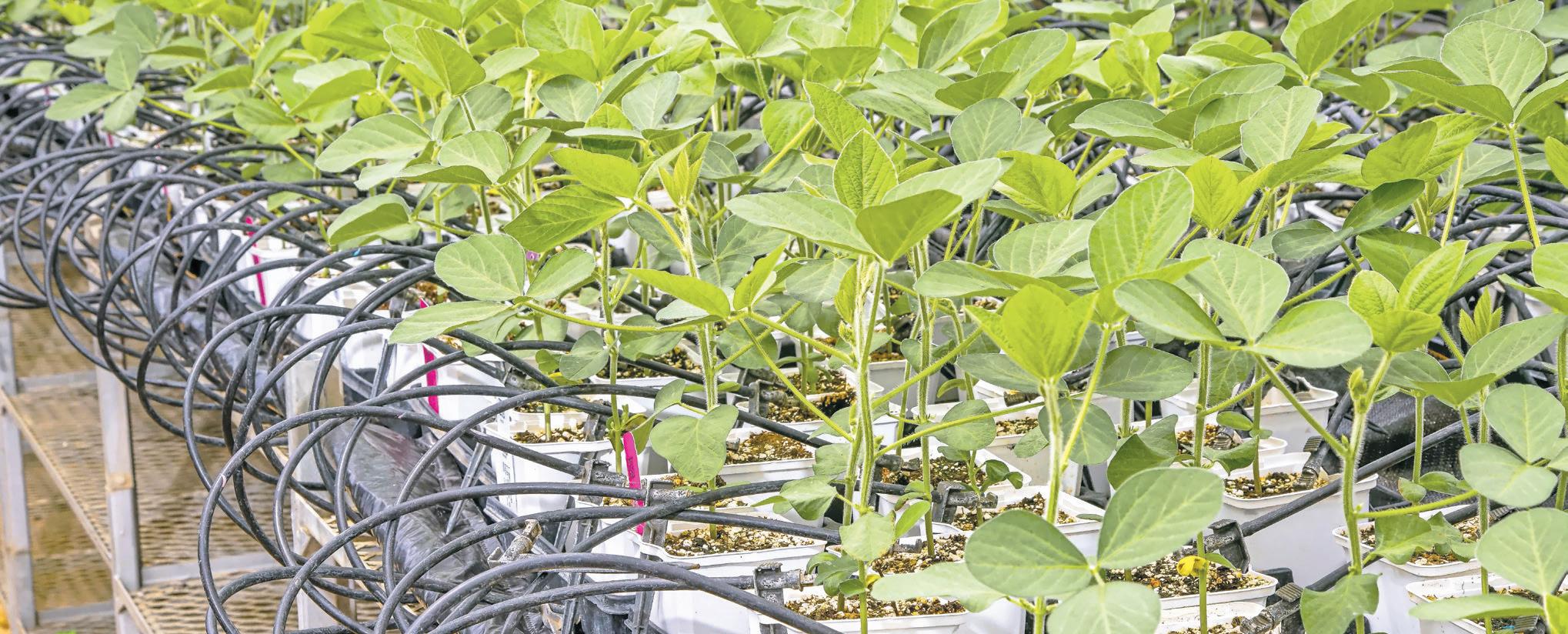
the company plans to invest between $145,000 and $150,000.
Greenhouses, Shade Houses Optimize Resources
Valle underscored the advantages of greenhouses in agriculture, which are essentially closed spaces where farmers and agri-scientists can cultivate vegetables and crops in a controlled environment, thus allowing them to generate more produce in a smaller space than in an open field, using fewer resources.
“The maximization of the spaces inside the greenhouses provides us with an efficiency capacity 70 percent greater than that we have in open fields. Naturally, if we are able to produce the same amount of cultivation in 70 percent less space, then the need for water is lower. So, these greenhouse structures, which have superadvanced technology, allow us to be extremely efficient with the use of natural resources, especially the use of water,” Valle explained, adding that implementing the use of greenhouses has been one of Bayer Crop Science’s “greatest achievements.”
Moreover, shade houses, as the name suggests, are used to grow plants that require less sunlight, such as orchids or spinach. Valle stated that with these structures, moisture retention increases by 15 percent. In other words, plants need 15 percent less water. individuals in farming actually respond to the Puerto Rico Electric Power Authority (Prepa) and the Department of Natural and Environmental Resources (DRNA by its Spanish initials) for their use of water, not to the P.R. Aqueduct and Sewer Authority (Prasa).
With the exception of some aquifers, none of the freshwater sources serve residential or commercial Prasa connections. Instead, the irrigation canal system in Puerto Rico is administered by Prepa’s Irrigation Division and farmers need to pay a monthly rate. Meanwhile, the DRNA establishes an amount for franchises for the extraction of water from the wells located on the farms.
“For many years, an image has been projected and there have been different groups that do not necessarily know about our industry that have alleged that the biotechnology industry in Puerto Rico has unrestricted and free access to water … and that is not correct,” Pereira affirmed. “In both cases, both Prepa and the DRNA, there are caps that you have for water consumption; you can’t consume more than what was approved in the franchise [by the DRNA] or what Prepa approved in your plan.”
With these restrictions on top of an already limited resource, Valle and Pereira hope to encourage farmers and biotech experts to use automated systems and controlled farming spaces, which they claim would also help achieve food autonomy in Puerto Rico and reduce an overreliance on imported produce. For more information about “Gota a Gota,” visit Bayer Crop Science Puerto Rico’s Facebook page at https:// www.facebook.com/Bayer4CropsPR.
Rear Admiral Peter Brown and EPA Associate Deputy Administrator Doug Benevento
Partnerships in Puerto Rico Bring Big Solutions to Small Communities
The devastation to date is truly remarkable. Circuit Rider program to send caused by Many rural communities in technical experts and support directly Hurricanes Irma Puerto Rico struggle to provide to small communities. The program and Maria in 2017 safe and reliable drinking water to empowers local decision-makers by exposed serious their residents. Puerto Rico’s awe- providing training and consultation underlying problems inspiring rainforests, mountains and to local water systems and their with Puerto Rico’s beaches earned it the moniker “Isle of operators. These experts, working electrical grid, transportation systems Enchantment.” However, the interior with local communities, will develop a and clean water infrastructure. Since topography contains steep roads that monitoring and compliance plan for that time, President Donald Trump are difficult to navigate, making access the community systems to administer has prioritized revitalization efforts, to water systems a challenge. safe drinking water. Ultimately, our marking a departure from simply Although residents of Puerto goal is to help these systems build repairing antiquated systems to Rico primarily get their water from capacity, meet existing needs and actively helping fortify communities the government-owned Puerto Rico withstand future natural disasters. against current and future Aqueduct and Sewer Authority (Prasa), EPA laid the groundwork in 2018 environmental challenges. there are at least 240 community by establishing the Water Coalition
During a recent visit to Puerto Rico, systems (serving almost 100,000 with other federal agencies, local senior officials from the White House residents) that are not overseen by governments and NGOs. Members of and the U.S. Environmental Protection Prasa. These community systems have the Water Coalition pledged over $10
Agency (EPA) witnessed firsthand struggled to meet safe drinking water million of private investments through the progress made as a result of standards because each community a Memorandum of Understanding coordinated federal action and has its own circumstances, and there with the EPA to make rural drinking collaboration with Puerto Rico and isn’t a neat one-size-fits-all solution to water systems more resilient against the private sector. Together, we are address the challenges. power outages and provide technical building resilience and sustainability During our visit to Caguas, we assistance and build capacity. This into recovery efforts, and the progress announced new aid through EPA’s collaboration has already resulted in
Ed Carey Chief Sales Officer, Discover Puerto Rico
Travel Advisors Will Help Us Lead the Recovery
The tourism industry Discover Puerto Rico has always travel advisors for expert advice, and in Puerto Rico made the safety and security of our we want those advisors to be thinking faces both an residents and visitors a top priority. of Puerto Rico. extraordinary All paid media was placed on hold We are very proud of our challenge and early in the pandemic to support the partnership with the American Society significant government’s proactive stance toward of Travel Advisors (ASTA). What began opportunity in controlling the number of coronavirus as a brainstorming session with the coming months. When travel infections. What has never stopped the Puerto Rico Chapter has led to restrictions are lifted and the colder is our commitment to providing significant global recognition. Puerto weather settles into our key markets, clear and accurate information to Rico was named ASTA’s 2020 North consumers will begin to search for travel professionals worldwide. One American Destination of the Year the perfect tropical getaway. In fact, example of this commitment is the and enjoyed a prominent position at research confirms that many travelers work we have done to continually the recent ASTA Global Live Virtual eager to escape have already begun engage and educate travel advisors Summit. making winter travel plans. throughout the pandemic. The Puerto Rico team was the As the official destination marketing It is well known that in times of third most visited by participants organization (DMO) of the island, crisis, many consumers will turn to at the summit and rated the No. 30 systems installing solar panels and backup battery storage. During the islandwide outage after earthquakes in January 2020, these systems were able to continue providing drinking water to their customers.
These restorative projects are evidence of the EPA’s concerted efforts to maximize efficiencies and opportunities through public-private partnerships. Our partners include: the Federal Emergency Management Agency; COR3 — Recover, Reconstruction, Resiliency; the Puerto Rico Department of Health; the U.S. Department of Agriculture’s Rural Development; the U.S. Department of Housing and Urban Development; 11 nongovernmental organizations; and three academic institutions. The joint efforts in Puerto Rico are a prime example of how publicprivate partnerships can be used to implement site-specific solutions where dangers to human health and the environment persist. While each community has its own unique challenges, we have the knowledge and resources to help Puerto Rico recover and improve its infrastructure through resilient and sustainable methods.
We recognize there is not a onesize-fits-all fix, and under President Donald Trump we are committed to rebuilding a cleaner, safer and more prosperous environment for future generations in Puerto Rico and across the United States.
1 destination with 91 percent of the 2,100 advisors who attended expressing interest in learning more about our current protocols. Our team has also been delivering presentations to chapter meetings in the North East, West and South East of the U.S. to maintain and nurture this awareness within the ASTA membership.
We believe that travel advisors are true ambassadors and wonderful advocates for the island if given the right tools and information. Our Puerto Rico Travel Agent Expert program is an online educational course specifically designed to educate travel advisors on the experiences that await their clients in all regions of our island. Once the course is successfully completed, they become certified “experts” on selling the island and we stay in constant contact with educational and promotional opportunities.
Ángel and Christiane Botello >All photos courtesy of Hallee Patterson Juan Botello
Galeria Botello,
A Hidden Treasure
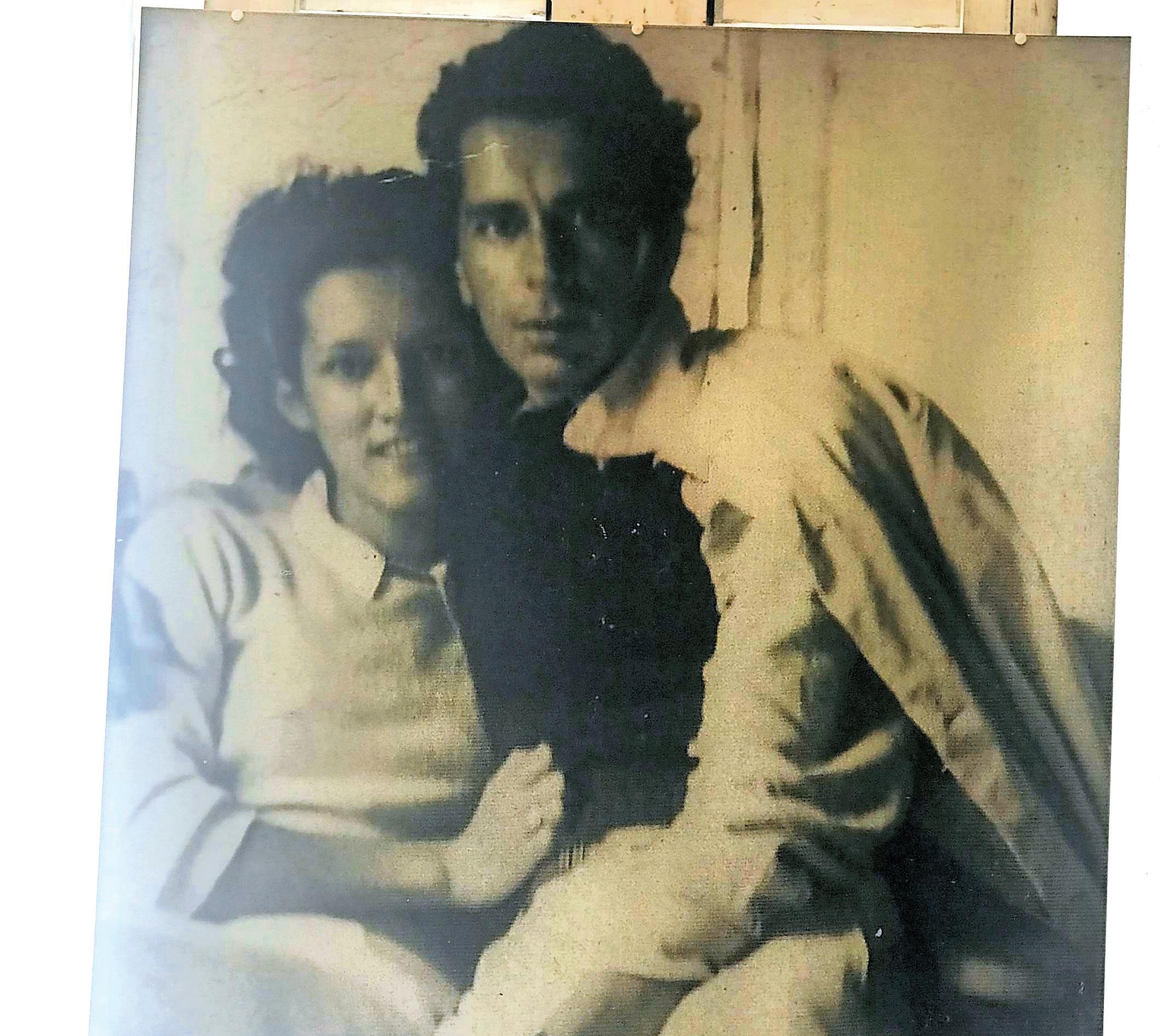
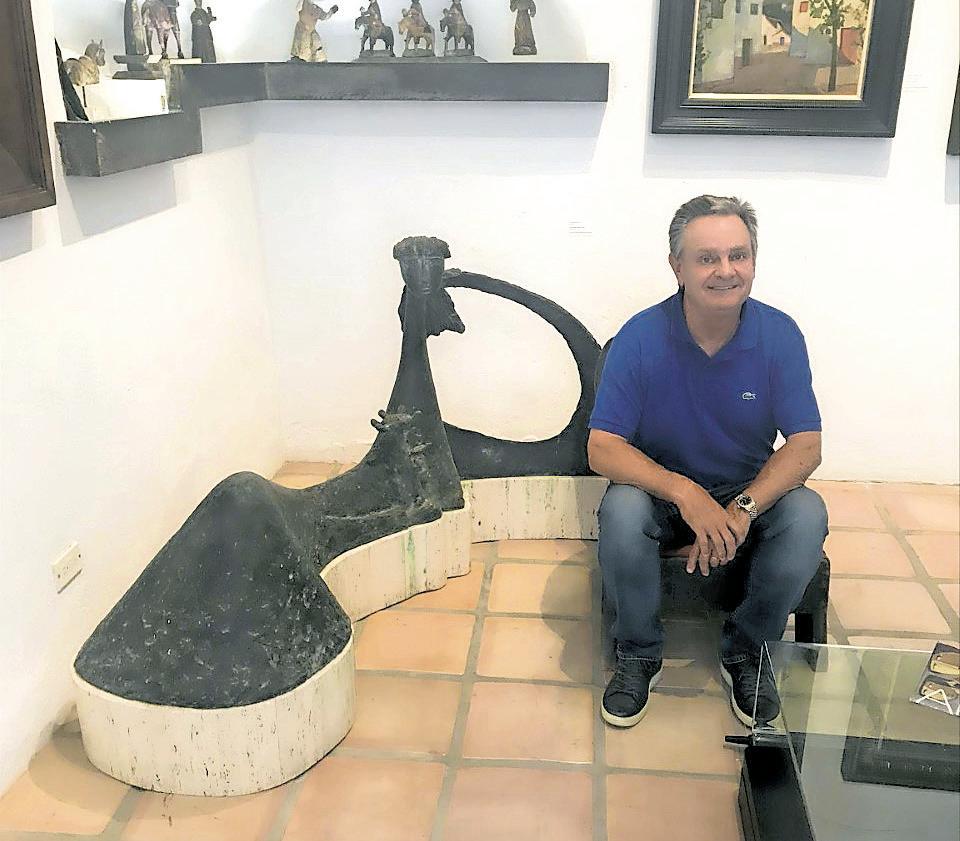
An Old San Juan ‘must see’
Hallee Patterson
“Visual surprise is natural in the Caribbean; it comes with the landscape, and faced with its beauty, the sigh of History dissolves.” — Derek Walcott, Saint Lucian poet and playwright
History takes on a new meaning when you have the opportunity to enter Old San Juan’s hidden treasure, Galeria Botello. The gallery has been located at 208 Calle Cristo for 60 years, but the building dates back 375 years. When you enter the premises, your eyes will be drawn to the large Botello sculpture. Juan Botello, the owner and son of the famous Spanish artist Ángel Botello, is always gracious and willing to share his father’s story and the creation of their gallery with visitors who stop by.
Juan took me through the Botello Museo on the second floor of the gallery. The art in the museum is a collaboration of the three children and his mother. Christiane Botello, the wife of Ángel Botello, is still living and working. She lovingly organized her husband’s legacy in chronological order.
Ángel Botello was born in Galicia, Spain in 1913 and died in Puerto Rico in 1986. He worked in many artistic medias: oil paintings, drawing, printmaking, bronze sculptures, wood carving, photography and mosaics. He was named “The Caribbean Gauguin.”
Beginning his career as an architect, he switched to art. He was trained in the school of impressionism in France. Playing with light is a big component of impressionism, so when he moved to the Dominican Republic, he discovered a different type of light and color. This is very apparent when you enter the museum and see the first paintings he did in France and Spain. His style is easy to recognize. The women have extended necks and flat heads.
Juan told me that when Ángel was in Haiti, he noticed that many women carried baskets on their heads. Therefore, he emphasized this in his art and sculpture. He also used dark straight lines to help define his subjects in his paintings. Another feature representative of his style is the red dot that adorns woman and children. The voodoo religion would brand women and children on their cheeks with a red plant dye, which signifies beauty and purity. His art also expresses his humor. He loved his children and many of his oils are stories about them. One large painting shows Juan’s brother feeling anxious about doing his homework.
There are many niches in the museum that were designed by Ángel to showcase his many “santos,” or wooden statues of saints. He was not a churchgoer, but he felt the “santos” were an important expression of Puerto Rican art. At one time in Puerto Rico’s history, there were different religions taking hold. Missionaries were converting new believers to their faith and having them burn their old bibles and “santos.” Therefore, you may notice some of the “santos” are burned because Ángel rescued them from destruction.
The frames of his paintings are artworks in themselves. He loved to work with wood. Therefore, he designed intricately cut wooden frames to enhance his paintings.
Ángel learned about bronze sculptures when he met Lindsay Daen, another famous sculpture artist in Puerto Rico. Before meeting Daen, Ángel sculpted in cement, wood and clay.
Ángel Botello’s life story is amazing! His sculptures and art are indelible. Juan Botello is giving and loving with the retelling of his father’s journey from Spain, France, the Dominican Republic, Cuba, Haiti and finally to Puerto Rico. Why Puerto Rico? Juan explained that the political climate in Haiti where Ángel lived was changing, and he was offered a teaching job in Puerto Rico. How lucky for us that he came here.
Navigating by Mango Trees, Pink Houses in Rural Puerto Rico
Life in the Caribbean
The Associated Press
CAGUAS (AP) — Firefighters in this city near Puerto Rico’s capital cheered when they recently got updated maps that include rural neighborhoods, confessing they sometimes had to rely on taxi drivers for directions during emergencies. That’s because more than 300,000 homes on the island have no formal address. The absence of street names and numbers across the island has long been a problem for the U.S. territory, where Internet map services sometimes fail. Directions can involve a mango tree, or a bakery or a house of a certain color. It’s even a problem in urban areas, like one district of the capital, San Juan, where some people rely on a lifesize Bigfoot doll on a balcony as a reference point for directions to a hospital. It’s not unusual to hear something like: “Turn right at kilometer 58 and make a left after a large hole. If you go past the big breadfruit tree, you’ve gone too far.” Oso Blanco prison, nicknamed the Alcatraz of the
Caribbean where hundreds of inmates were killed, is still used as a reference point even though crews demolished it long ago. So getting lost has long been an acceptable and occasional fun part of island life for some, but the coronavirus pandemic, a recent series of earthquakes and increasingly active hurricane seasons are prodding authorities to resolve the problem. Without an address, emergency responders cannot find people quickly or deliver basic supplies or medical care when up to 60 percent of homes in some municipalities lack one. “If you’re not on a map, you don’t exist,” said Raúl
Ríos, a former manager at the U.S. Postal Service who now leads iCasaPR, a nonprofit group that aims to standardize addresses on the island. Puerto Rico’s 78 municipalities and dozens of government agencies still use separate databases that use different names for the same streets or list the same addresses in varying ways, such as 1013 or 10-13. “It’s like the Tower of Babel,” Ríos said. Four years ago, a young boy died in San Juan because it took an ambulance 15 minutes to find the apartment in a complex that did not have a standardized address, said Nazario Lugo, the president of Puerto Rico’s Association of Emergency Responders who was the city’s emergency management director at the time. And the mother could not go outside to flag down emergency responders because she was following CPR directions from the 911 operator, he said. The problem is so widespread the government even recommends that a home emergency plan include designating someone to go out to a main road to flag down emergency responders.
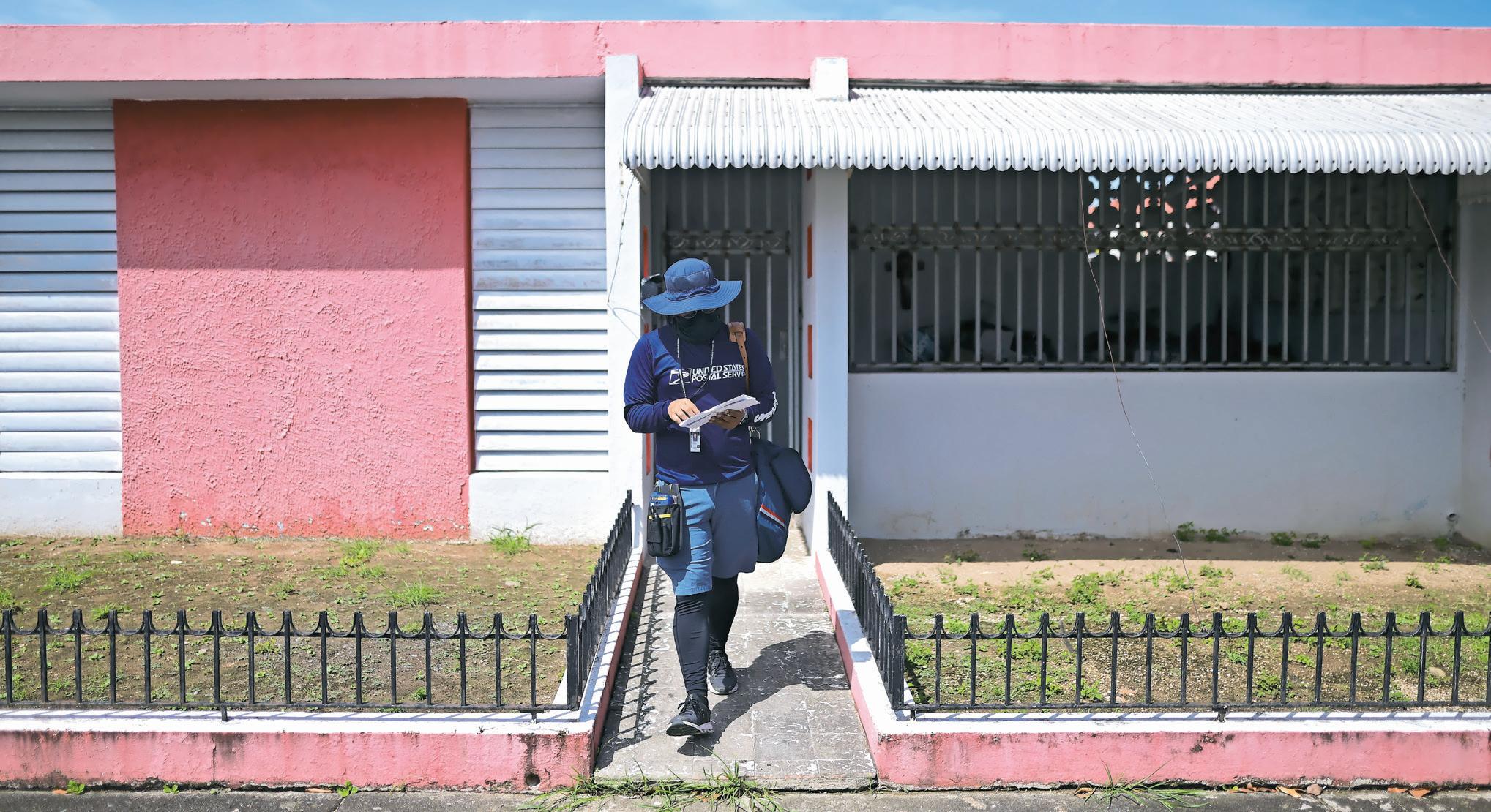
Efforts in Caguas
As in other cities, officials here in Caguas want to avoid such tragedies. Over the past decade, more than 100 roads have been named for the first time, but there are many more that need identities and it’s not always easy, said Carmen Díaz, auxiliary planning director. Street names have to be unique and they are limited to 28 characters, so to help neighborhoods come up with ideas Díaz bought books on Puerto Rican plants and animals, novels by famous local authors and even suggested the name of the song “Calma” by Puerto Rican pop singer Pedro Capó. Díaz said the practice of using landmarks to
>AP Photo/Carlos Giusti
give directions is not sustainable: “They’ve already changed the color of that pink house or cut down that tree.” It’s those types of directions that Caguas resident Luz Martínez used to rely on before her neighborhood got street names and house numbers. She even told visitors to ask for her wellknown neighbor “Nazario” if they got lost en route to her house. “It was very complicated,” she said. As president of La Unión community, Martínez held a vote on potential street names. Among the winners: José Díaz Dede, who ran an informal grocery delivery service, and Antonia Díaz, who campaigned to pave their streets. José Díaz Dede learned his name won while in a nursing home, but he died before he could see the sign go up. Antonia Díaz, who is 106, still lives on the street named for her. Not everyone, though, wants to be on a map. Ríos said some people resist because they have added a swimming pool or other feature to their home without permits. Others simply want to live off the grid. And many people have their official addresses listed as post office boxes — with clusters of rusting boxes dotting rural routes around the island — and don’t want to have to switch to a new address.

